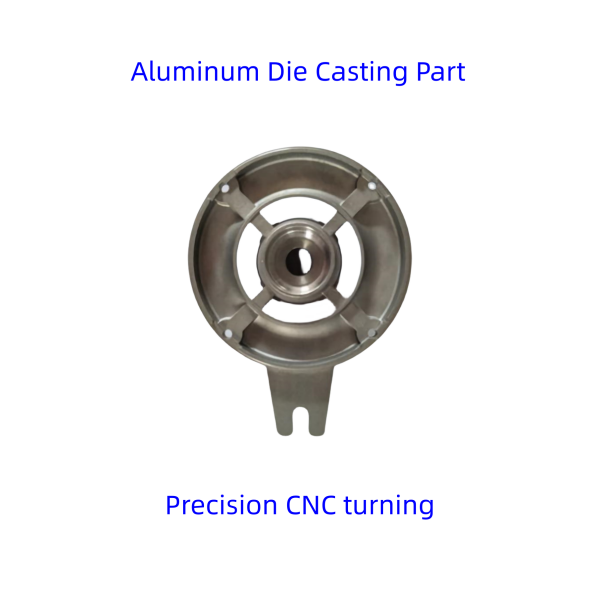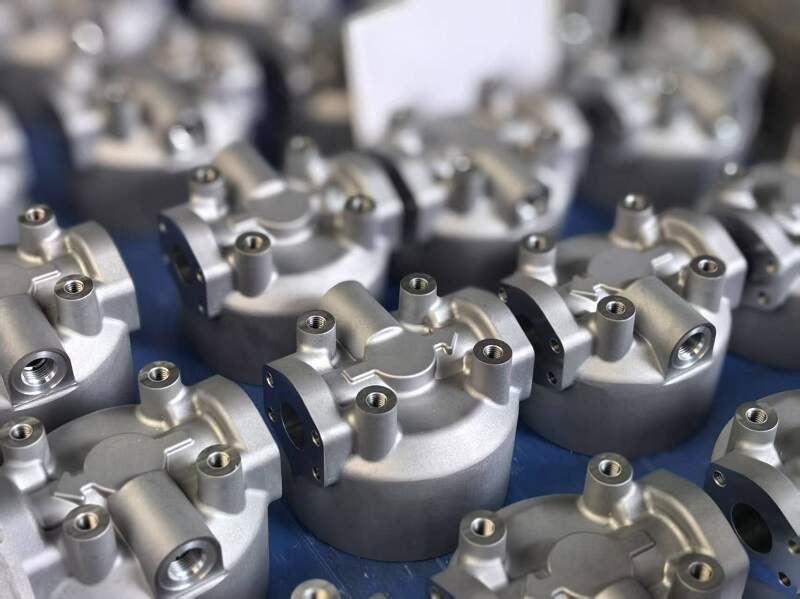Checking Out the Ingenious Processes Behind Modern Light Weight Aluminum Foundry Operations
Modern aluminum factory operations are undergoing substantial transformation. Automation and AI are improving production techniques, enhancing both efficiency and accuracy. The assimilation of 3D printing is enhancing mold and mildew creation, while sustainability practices are becoming more vital. Each of these advancements plays a crucial duty in redefining the sector. However, the effects of these modifications extend past simple production performance. What opportunities and obstacles lie ahead for light weight aluminum factories in this evolving landscape?
The Role of Automation in Aluminum Foundries

Automation adds to enhanced safety and security requirements within the factory atmosphere. By moving unsafe tasks to machines, human employees can concentrate on managerial roles and quality assurance, minimizing the danger of crashes. On top of that, data analytics originated from automated processes offer beneficial insights right into operational performance, bring about much better decision-making and continuous improvement. As the need for light weight aluminum items grows, the adoption of automation modern technologies will likely expand, better transforming the landscape of light weight aluminum factory procedures.
Advancements in Spreading Technologies
Recent developments in casting modern technologies are transforming aluminum foundry operations. Developments such as 3D printing combination, progressed alloy formulations, and automated procedure optimization are improving performance and item quality. These advancements are pivotal in meeting the developing demands of the market.
3D Printing Integration
Integrating 3D printing technology into aluminum factory operations has actually reinvented standard spreading approaches, improving both effectiveness and accuracy. This ingenious method allows for the rapid manufacturing of complex mold and mildews and cores, considerably minimizing preparations and material waste. By using additive manufacturing, shops can produce complex geometries that were previously tough or difficult to attain with conventional techniques. The adaptability of 3D printing likewise makes it possible for fast design alterations, cultivating a more active manufacturing process. In addition, this assimilation supports the usage of light-weight structures, which is progressively important in sectors such as automobile and aerospace. As light weight aluminum shops remain to embrace 3D printing, they position themselves at the leading edge of technical innovation, driving improvements in item top quality and operational abilities.
Advanced Alloy Formulations
The advancement of advanced alloy formulas has greatly enhanced spreading modern technologies in light weight aluminum factory operations. These formulations integrate various components, such as copper, magnesium, and silicon, to improve mechanical homes and thermal resistance. By customizing the composition of aluminum alloys, makers can attain specific performance characteristics that fulfill the demands of varied applications, from automobile parts to aerospace frameworks. Using advanced alloys also adds to lowered weight and increased strength, which are vital variables in modern-day engineering. Additionally, technologies in alloy advancement allow better fluidness during spreading, leading to improved surface coatings and lowered issues. Overall, progressed alloy solutions represent a considerable leap ahead, placing aluminum foundries to fulfill the evolving demands of different markets successfully.
Automated Refine Optimization
Innovations in casting modern technologies have paved the means for computerized process enhancement in light weight aluminum factory operations. By incorporating advanced software program and real-time data analytics, factories can currently simplify production processes and improve quality control. Automated systems monitor variables such as stress, temperature level, and cooling rates, enabling prompt changes that reduce defects and waste. Furthermore, equipment understanding formulas examine historic performance information to forecast excellent settings, therefore increasing efficiency and minimizing cycle times. Robotics also play a significant role, managing repetitive tasks that enhance safety and precision. On the whole, these innovations not only drive functional efficiency yet additionally enable factories to satisfy the growing demand for top quality light weight aluminum elements in various markets.
Smart Production and Industry 4.0 Integration
The assimilation of Smart Manufacturing and Market 4.0 within aluminum factories is changing operational efficiency. By leveraging IoT modern technologies, automation, and robotics, shops can enhance production procedures and lower downtime. Furthermore, data analytics supplies important understandings that improve decision-making and drive continual renovation.
IoT in Foundry Operations
As manufacturers significantly embrace the Internet of Things (IoT), foundry operations are experiencing a transformative shift in the direction of wise manufacturing and Sector 4.0 combination. aluminum casting. IoT technologies make it possible for real-time data collection and evaluation, improving decision-making procedures and functional efficiency. Sensing units and connected devices monitor devices efficiency, material use, and environmental conditions, allowing for positive maintenance and source optimization. This connectivity promotes an extra agile manufacturing environment, where changes can be made quickly in feedback to market demands. In addition, IoT facilitates enhanced traceability and quality control, as data from the entire manufacturing cycle can be conveniently accessed and assessed. In general, the assimilation of IoT in foundry operations significantly boosts performance and drives development in aluminum production processes
Automation and Robotics Combination
Automation and robotics combination is revolutionizing aluminum factory operations by improving effectiveness and accuracy. This transformative method simplifies procedures such as molding, putting, and finishing, minimizing human error and enhancing outcome consistency. By employing sophisticated robotic systems, shops can accomplish greater production rates while keeping rigid top quality standards. Automated systems also enable real-time surveillance and adaptive control, permitting quick changes to manufacturing criteria. Furthermore, the assimilation of robotics reduces labor prices and minimizes safety threats associated with hand-operated handling of molten metal. As shops welcome clever production concepts inherent in Market 4.0, the synergy in between automation and robotics solidifies their one-upmanship, leading the method for sustainable growth and development in the light weight aluminum casting sector.
Information Analytics for Performance
Harnessing data analytics significantly boosts effectiveness within aluminum foundry procedures, lining up with smart production and Industry 4.0 principles. By leveraging real-time information collection and evaluation, shops can keep an eye on manufacturing procedures, predict equipment failures, and enhance resource allowance. This data-driven strategy promotes insightful decision-making, making it possible for managers to identify bottlenecks and improve workflow. Additionally, predictive analytics equips foundries to anticipate market needs, consequently decreasing waste and making certain timely product distribution. Integration of data analytics with IoT tools improves operational presence, fostering an aggressive upkeep society. Ultimately, carrying out these advanced logical strategies not only increases efficiency yet likewise drives advancement, positioning aluminum factories to satisfy the advancing needs of the market while preserving affordable edges in a quickly altering landscape.
Sustainable Practices in Light Weight Aluminum Spreading
While the aluminum casting industry has actually typically dealt with visite site ecological challenges, numerous shops are now embracing lasting methods to minimize their influence (Aluminum Casting Company). A substantial emphasis has been on reusing aluminum scrap, which not just decreases waste yet additionally preserves power contrasted to key aluminum production. Innovative melting technologies, such as induction heating systems, enhance energy efficiency and reduced greenhouse gas discharges
Furthermore, shops are applying closed-loop water supply to reduce water consumption and reduce thermal pollution. Using green binders in mold-making procedures is acquiring traction, additional decreasing unsafe exhausts.
Some centers are investing in eco-friendly power sources to power procedures, lining up with worldwide sustainability objectives. By incorporating these techniques, the light weight aluminum casting sector is advancing towards a much more environmentally accountable future, demonstrating that economic growth can exist side-by-side with environmental stewardship - Precision aluminum casting. These initiatives show a dedication to sustainability and the significance of environmental responsibility in production
Quality Assurance Innovations
As the aluminum casting market advancements towards sustainability, the value of quality assurance innovations ends up being increasingly apparent. Modern light weight aluminum foundries are taking on innovative modern technologies to enhance their high quality guarantee processes. Techniques such as real-time surveillance and data analytics allow suppliers to spot issues and disparities early in the production cycle. Carrying out automated inspection systems geared up with maker finding out algorithms guarantees that products fulfill strict top quality standards while lessening human error.
Moreover, the combination of non-destructive testing methods, such as ultrasonic and radiographic examinations, provides much deeper understandings right into the honesty of spreadings without harming the material. These advancements not Discover More Here just improve item dependability however likewise minimize waste, lining up with sustainability objectives. On top of that, the fostering of standard top quality frameworks aids enhance operations across various foundries, assuring uniformity in output. Jointly, these improvements are improving top quality control, cultivating a culture of excellence within the aluminum spreading market.
Future Patterns in Aluminum Shop Operations
What innovations exist ahead for light weight aluminum foundry operations? The future of light weight aluminum shops is poised for change with developments in automation, expert system, and sustainable techniques. The integration of robotics and automated systems is anticipated to boost efficiency and precision in the spreading procedures, minimizing human mistake and labor expenses. Additionally, AI-driven analytics will certainly allow real-time monitoring and predictive upkeep, optimizing functional performance and decreasing downtime.
Sustainability stays a focal point, with shops progressively taking on eco-friendly methods, such as making use of recycled light weight aluminum and establishing low-emission melting modern technologies. Developments in 3D printing are also prepared for to transform mold-making, permitting for complex geometries and decreased product waste. As the market read accepts digitalization, data-driven decision-making will end up being crucial, enabling foundries to react swiftly to market demands. Collectively, these fads promise to redefine light weight aluminum factory procedures, making them extra reliable, sustainable, and versatile to future challenges.

Often Asked Inquiries
What Safety And Security Actions Are Carried Out in Light Weight Aluminum Factory Workflow?
Light weight aluminum factory operations implement various security measures, consisting of personal protective equipment, air flow systems to manage fumes, normal safety and security training, emergency situation action strategies, and strict surveillance of temperature level and devices to avoid accidents and guarantee worker safety.
Just How Do Factories Manage Labor Force Training for New Technologies?

What Products Are Commonly Recycled in Aluminum Foundries?
Aluminum factories commonly recycle scrap aluminum, including post-consumer products like drink cans, automobile components, and building materials. This reusing procedure reduces waste and preserves resources, contributing to a much more lasting aluminum production market.
How Does Light Weight Aluminum Casting Impact the Atmosphere?
Aluminum casting impacts the atmosphere through energy-intensive procedures, greenhouse gas emissions, and potential regional contamination. Developments in recycling and sustainable methods can alleviate these effects, advertising a much more eco-friendly approach to light weight aluminum manufacturing.
What Are the Regular Lead Times for Light Weight Aluminum Casting Projects?
Common preparation for light weight aluminum spreading jobs vary substantially, typically varying from two to six weeks. Elements affecting these timelines consist of intricacy, order dimension, and product schedule, affecting general manufacturing schedules in factory procedures.
Automation progressively plays a necessary duty in aluminum factories, boosting efficiency and precision in the manufacturing process. Advancements in casting modern technologies have paved the method for automated procedure enhancement in light weight aluminum foundry procedures. Utilizing information analytics considerably boosts performance within aluminum factory operations, straightening with wise manufacturing and Sector 4.0 concepts. A significant focus has been on reusing light weight aluminum scrap, which not just minimizes waste yet likewise preserves energy contrasted to main light weight aluminum manufacturing. Aluminum shops frequently recycle scrap aluminum, consisting of post-consumer products like drink canisters, automotive parts, and construction materials.